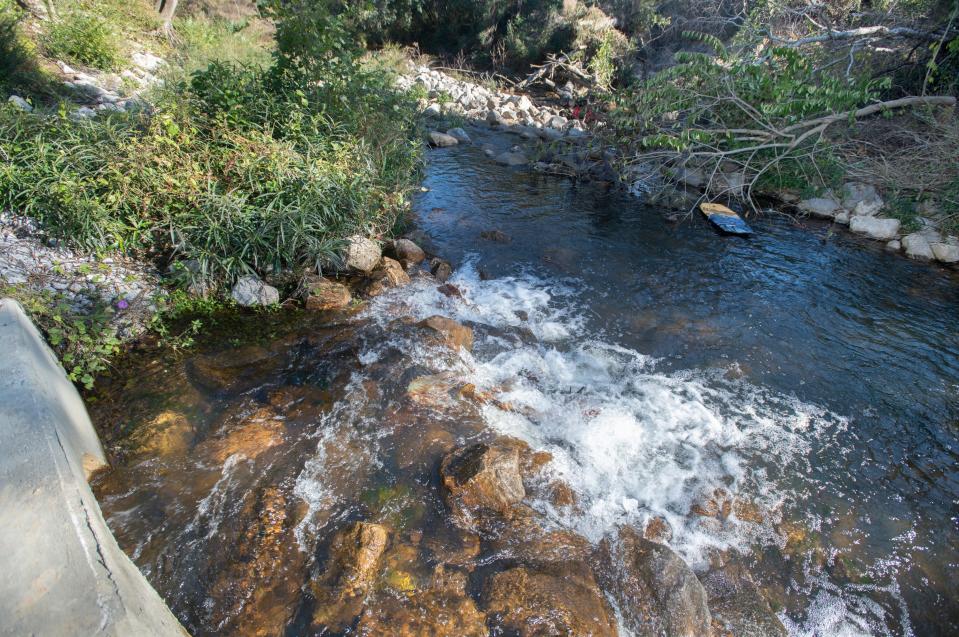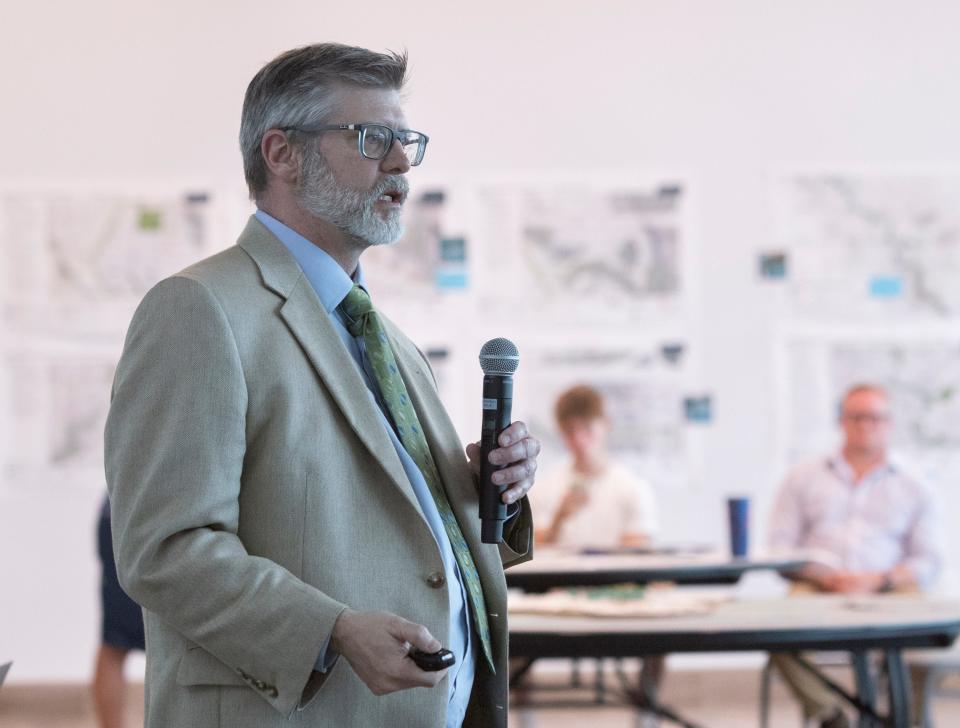Two-year journey to plan repairs to Carpenter Creek and Bayou Texar taking shape
On a night set aside to celebrate the completion of the Carpenter Creek and Bayou Texar Watershed Management Plan, event organizers were also able to announce that two grants had been tentatively awarded for projects needed to restore the impaired waterways.
Outgoing Pensacola Mayor Grover Robinson was among the dignitaries on hand Tuesday at the Bayview Community Center Tuesday evening to witness what WSP (formerly Wood) Project Manager Crissy Mehle called the closing out of the Watershed Management Plan.
"A lot of time and energy have gone into this," Robinson told a room full of people gathered to hear what comes next with the restoration effort. "It's been a journey."

Signs of life return: Could the battle be turning in the fight to save Bayou Texar?
Citizen input: Know something about Carpenter Creek or Bayou Texar? Escambia County wants to hear from you
The company embarked on creating the Watershed Management Plan in early 2020. A copy of the final plan will be available to the public in about a month, Mehle said.
Some portion of the next steps in the restoration process appear likely to be paid for with RESTORE Act dollars. This week DEP released a draft list of projects under consideration for funding.
If finalized as written, $8.1 million will go toward projects that will directly impact the health of Carpenter Creek and Bayou Texar.
FDEP has proposed providing $2.2 million for planning, designing and permitting work to be done on what is being called a "catalytic project" that will restructure the flow of Carpenter Creek for a distance of approximately 2.5 miles from I-110 to 12th Avenue.
It is hoped the work, which will also restore approximately 20 acres of wetlands, will significantly reduce the amount of sediments entering the creek and flowing into Bayou Texar, said Matt Posner, the director of the Pensacola and Perdido Bays Estuary Program.
The estuary program submitted the catalytic project grant request.
Treatment stations
The other project that has found its way onto the DEP list would provide $5.9 million for the design, permitting and construction of five storm water treatment units along Bayou Texar.
The underground treatment units, to be installed by the city of Pensacola, are designed to remove nutrients like nitrogen and phosphorus, along with suspended solids from storm water.
The treatment stations will service approximately 40 acres of densely populated Bayou Texar watershed prior to discharge into the bayou, according to the description provided on the DEP draft proposal.
Stormwater runoff concerns: City installing storm water runoff treatment units along Bayou Boulevard to help water quality
Landscape architect Sophie Reidel called the catalytic project the highest priority established within the Watershed Management Plan.
She said citizens providing input into the plan as it moved through a public hearing process showed "overwhelming support" for cleaning up an area of Carpenter's Creek between Davis Highway and 12th Avenue.
Many favored creation of a "blueway" on the creek to provide unimpeded kayak access and called for special attention to areas between Davis Highway and Airport Boulevard, at historically significant Jennie's Swimming Hole and at Ninth Avenue.
Restoration project
Environmentally, vast amounts of sediment are moving through Carpenter Creek between North Davis Highway and 12th Street, biophysical engineer John Kiefer told those assembled Tuesday. It is expected "societal matters" will have the biggest impact on the speed with which the project can be concluded.

Kiefer estimated it would take about two years for design work to conclude and construction to begin at the Carpenter Creek site. He estimated the entire restoration project would likely take between seven and 11 years to complete.
"You may think seven to 11 years is a long time, but the thing is, this has been developing for decades," he said.
Also as part of the overall restoration project, Escambia County received a Natural Resource Damage Assessment grant to purchase two properties off Olive Road at the headwaters of Carpenter Creek.
Plans call for using the land to develop storm water treatment for the property as well as to provide recreational opportunities.
"We hope to kick start that project in January," county official Terry Berry said Tuesday.
This article originally appeared on Pensacola News Journal: Carpenter Creek final Watershed Improvement Plan unveiled

